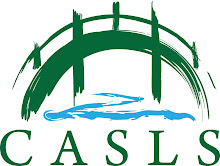Research shows that implicit proficiency in a second language only develops when learners are given opportunities to use the language in unrehearsed communication. The Learner Language: Tools for Teachers project uses the theoretical framework of Exploratory Practice and a set of multimedia materials to show teachers of Chinese, Japanese, Korean, and Persian how to encourage and focus on learner language development through unrehearsed communication activities in their own classrooms. An annotated bibliography supplies research findings on second language acquisition and learner language development specific to each of the four languages.
Under the direction of CARLA Director Elaine Tarone, beginning/intermediate students of Chinese, Japanese, Korean, and Persian were video recorded as they worked in pairs on unrehearsed interactive puzzle-solving speaking tasks with stimulating visual images as prompts. The video clips were professionally edited, transcribed and translated into English. Project staff developed and field tested activities to help teachers of Chinese, Japanese, Korean, and Persian learn six different methods of analyzing learner language:
Learner Characteristics—teachers learn to identify individual differences among second language learners that may affect their success in second language acquisition.
Error Analysis—teachers learn how to document and analyze learners’ systematic errors.
Interlanguage—teachers identify stages of development of certain grammatical forms in learner language.
Learning in Interaction—teachers see how learners co-construct language and respond to correction in pairwork.
Referential Communication—teachers identify ways the learners effectively identify things, actions and locations.
Complexity—teachers learn simple measures of syntactic complexity and lexical variety, and how to use these to measure learners’ development of academic language.
With these materials, teachers will develop the hands-on skills they need to monitor the growth of learner language in their own classrooms so they can more effectively tailor their instruction to meet the learning needs of their students. The web-based materials are designed to be useful for self-study as well as in teacher development and second language acquisition courses.
The learner language website provides a wealth of information for teachers of all languages on learner language, error analysis, interlanguage, referential communication, and complexity. Another section gives practical information on designing interactive communication tasks that invite learners to use their second language in meaningful, unrehearsed communication.
The Learner Language: Tools for Teachers website and multi-media materials for Chinese, Japanese, Korean and Persian are available on the CARLA website at: http://www.carla.umn.edu/learnerlanguage
CARLA Update - Winter 2012. (carla@umn.edu, 13 Jan 2012).
February 5, 2012
Subscribe to:
Post Comments (Atom)





No comments:
Post a Comment
Note: Only a member of this blog may post a comment.